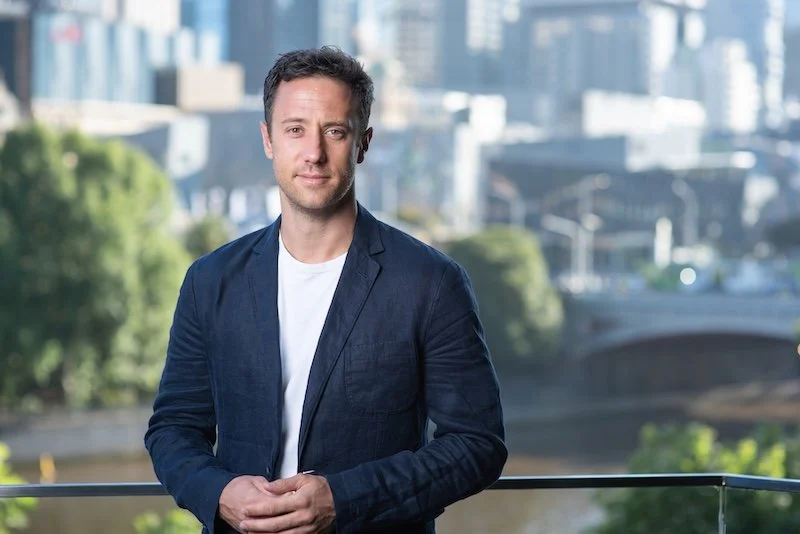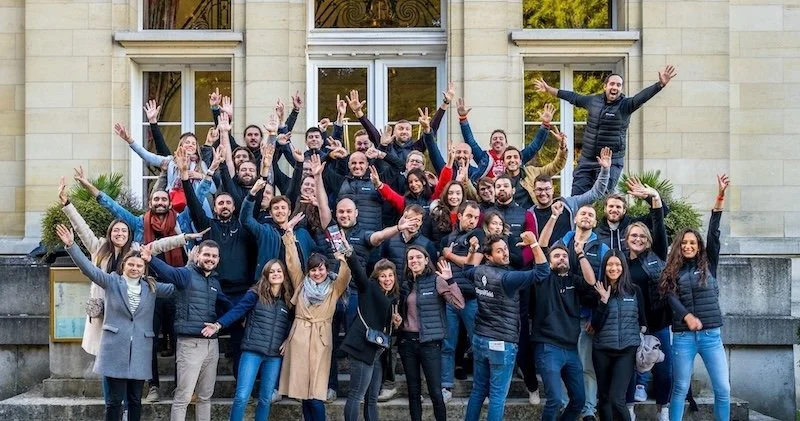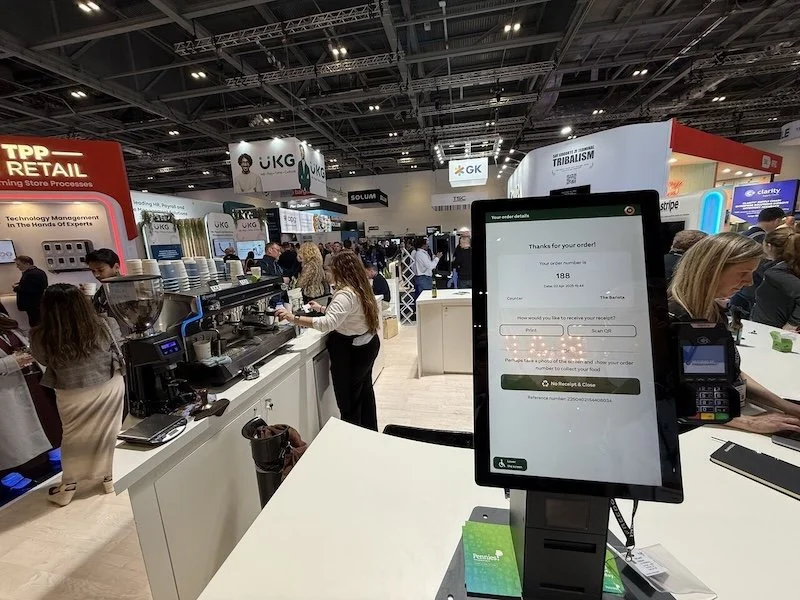Bhavya Wadhwa, ServiceNow CMA and enterprise expert, innovates digital business transformations
by Ellen F. Warren
Bhavya Wadhwa is currently Senior Manager/Senior Architect for Technology Applications Consulting and Business Transformation at IBM. In the past decade, he has held technology centric leadership positions at four of the top five global consulting organisations.
Bhavya specialises in complex service and operations management digital transformations using ServiceNow, optimising processes in IT, Human Resources, Service Delivery, Procurement, Supply Chain, and Security for organisations across diverse industries. He is a recognised subject matter expert (SME), thought leader, and speaker at leading industry conferences, including ServiceNow World Forum and the global ServiceNow Knowledge 2023 and 2024 events, where he presented on telecom industry architectures and global procurement and supply chain solutions.
Among his significant career accomplishments, Bhavya has led strategic technology development projects for major clients in the life sciences, retail, energy, pharmaceutical, media, education, transportation, and telecommunications sectors, transforming business operations to drive cost savings and efficiency gains.
In designing management information systems that drive digital transformation and innovation, Bhavya is trusted by his clients’ executives and stakeholders to analyse business requirements and architect solutions that solve operational problems and generate tangible outcomes.
Leading cross-functional teams, his strategic ServiceNow implementations utilise core technologies, enterprise platforms, technology strategy, product road-mapping, architectural best practices, industry frameworks, analytics, automation, artificial intelligence (AI), user experience design, security, data privacy, adoption, programme/project management, and governance to deliver high impact solutions across various industries.
Bhavya is one of approximately 200 active global holders of the prestigious ServiceNow Certified Master Architect (CMA) credential, the pinnacle of ServiceNow certification and recognition. He has also earned the ServiceNow Certified Technical Architect (CTA) certification, making him one of only five professionals worldwide to have earned both the CMA and CTA credentials.
He received a Bachelor of Technology degree in Electronics and Communication Engineering from Jaypee University of Information Technology (JUIT) in Solan, H.P., India, and earned a Master of Science degree in Management Information Systems from University at Buffalo, The State University of New York.
He additionally holds nearly 20 specialised IBM and ServiceNow certifications, including IBM Generative AI & Watson, IBM Enterprise Design Thinking Practitioner, and ServiceNow Certified Implementation Specialist in Application and Portfolio Management, Hardware Asset Management, Risk and Compliance, Security Incident and Response, Project and Portfolio Management, Human Resources, IT Service Management, and Customer Service Management.
We spoke with Bhavya about how he is integrating ServiceNow and Gen AI with other enterprise platforms to revolutionise business models and workflows across different industries, and how businesses can benefit from intelligent and cognitive enterprise solutions.
Q: Bhavya, tell us about your background. When you launched your professional career with Tata Consultancy Services (TCS) more than a decade ago, you were already a ServiceNow SME and Implementation Specialist, responsible for Scope of Work projects exceeding $10 million. What led you to focus your IT career in ServiceNow, and how did you gain this very specialised expertise?
A: I started off as an infrastructure tools analyst, which involved building complex enterprise platforms and cloud architectures that provided my clients with real-time monitoring of their IT infrastructure and processes. I had always been passionate about solving complex business problems and make significant impacts in the communities.
In the same ecosystem, I got early exposure to large scale IT Service Management (ITSM) transformations, which allowed me to develop deep expertise in process automation, platform architecture, and enterprise workflow solutions. What drew me to ServiceNow was its transformational impact on enterprise operations.
At that time, it was an ITSM platform that mainly had capabilities for incident, change, problem, and knowledge management. We could not foresee then that it would become the enterprise platform of the 21st century in the service management space.
Unlike traditional ITSM tools, ServiceNow offered a scalable and highly configurable platform that extended beyond IT into HR, Security, Procurement, Supply Chain, and Customer Service Management. To match the pace of the platform evolution, I had to continuously upskill. Being in this space, I saw a unique opportunity to bridge business needs with technology and drive end-to-end digital transformation.
Becoming a ServiceNow specialist began with the opportunity to gain early, hands-on experience. When I started at TCS, I was fortunate to work on global implementations, which helped me develop a full-stack understanding of ServiceNow - from administration and development to architecture and strategy. I expanded and honed my skillset with continuous learning and certifications.
Over the years, I pursued development, administration, and advanced ServiceNow product certifications, eventually becoming a Certified Master Architect (CMA). Simultaneously, I pursued complex implementations and thought leadership. As my career progressed, I led multimillion-dollar transformations across Fortune 500 companies, integrating ServiceNow with AI, automation, and cloud ecosystems to maximise business value. Today, I continue to drive large scale digital transformation initiatives, shaping the future of Service Management, Operations, and AI driven automation.
Beyond solving problems in a traditional way for different business functions for any organisation, I always had a deep interest in building industry solutions in which I could create a purpose built solution. I have always been driven by a passion for creating purpose-built industry solutions - ones that don’t just automate workflows but fundamentally transform how businesses operate.
This is where I found ServiceNow to be a game-changer. With its industry and business functions focused solutions spanning Telecom, Healthcare, Finance, Supply Chain, HR, and Security, ServiceNow provides a low-code, AI powered platform that allows for tailored, scalable innovations. I leveraged this capability to design and implement complex digital transformation initiatives, particularly in Telecom Order Management, Enterprise Service Management, and AI driven Operations.
For example, while working on Telecom Order Management, I designed a ServiceNow-based solution that streamlined order orchestration, improved SLAs, and automated compliance tracking, delivering tangible business outcomes such as cost reduction and operational agility. Similarly, I am helping global business service departments in Fortune 500 enterprises to centralise and transform their legacy systems, as well as processes using IT, HR, Customer Service, Procurement, and Supply Chain product lines, ensuring a seamless employee, customer, and supplier experience.
Over the past year, I have been focused on ServiceNow’s industry accelerators, pre-built AI models, and building the platform with flexibility to integrate with enterprise ecosystems. This has enabled me to go beyond just solving problems to creating industry wide impact by helping organisations achieve greater efficiency, resilience, and digital maturity.
Q: Throughout your career, you have developed strategies and implemented technologies to build operational value and drive performance in a wide array of business applications, including IT Service Management (ITSM), IT Operations Management (ITOM), IT Business Management (ITBM), Human Resources (HR),Governance, Risk, & Compliance (GRC), Customer Service Management (CSM), Field Services (FSM), Telecom Service Management (TSM), DevOps, Security Operations (SecOps), and Legal.
More recently, you have focused on Order Management (OM) process improvements, particularly for the Telecom, Media, and Technology (TMT) industry. Can you give us a brief overview of ServiceNow, and tell us how this cloud technology has penetrated into the OM space?
A: ServiceNow is a leading cloud-based platform that specialises in digital workflow automation and enterprise service management, transforming how organisations deliver services across IT, HR, customer service, and other business domains. The platform is widely recognised for its scalability and flexibility, and as such it has become a critical enabler of digital transformation for enterprises in the US and globally. Its impact is evident in how it has streamlined operations, improved productivity, and enhanced customer and employee experiences for organisations of all sizes.
Over the years, ServiceNow has expanded its capabilities beyond traditional ITSM into areas like CSM, Integrated Risk Management (IRM), and, notably, Order Management. Its penetration into the OM space has been transformative, offering telecom, retail, manufacturing, and supply chain industries a unified platform to manage complex order lifecycles. By automating workflows, integrating systems, and providing real-time visibility into order processes, ServiceNow has addressed critical challenges in order fulfillment and service delivery, solidifying its position as a global leader in enterprise solutions.
Q: What differentiates ServiceNow from other platforms as an integrated solution provider? Implementing a digital infrastructure transformation is a complex undertaking. Are there unique features and benefits in ServiceNow’s value proposition that make this scale of change worthwhile?
A: When I talk to executives, technology professionals, and business leaders, they often they tell me that ServiceNow is a ticketing platform or a tool to help create incident reports. This is entirely incorrect.
In fact, ServiceNow is much more than a ticketing platform - it is a highly sophisticated, unified solution for digital business transformation that enables organisations to create exceptional experiences, drive innovation, and maximize the value of their technology investments. Unlike point solutions that address specific challenges, the ServiceNow Platform connects siloed systems, departments, and processes, offering a single platform for enterprise digital workflows.
In my experience, I have found that people are often unaware of ServiceNow’s comprehensive scope, or how it can integrate with APIs and middleware to streamline processes and create a unified view. As an experienced ServiceNow CMA, I can take full advantage of the platform’s features to architect transformative solutions that address my clients’ needs.
These include Workflows for Technology (accelerating digital transformation with ITSM, ITOM, ITBM, SecOps, GRC and more); Employee (delivering a unified employee experience with HR Service Delivery, Workplace Service Delivery, and Employee Center); Creator (empowering rapid app development with low-code tools like App Engine and Integration Hub); and Customer (enhancing customer experiences with Customer Service Management, Order Management, and Field Service Management); and Industry (supporting financial services, healthcare, telecommunications, retail, and other sectors).
This comprehensive approach differentiates the ServiceNow platform in how it drives efficiency and long-term business value.
Q: Based on your experience, have you developed a strategic approach to designing digital transformations?
A: I’ve found that ServiceNow CMAs are always on the “hot seat” to drive executive conversations as companies develop new capabilities and SKUs (stock keeping units). My strategy is to build industry specific product portfolios. For example, I’ve had great success with the TMT industry.
Penetration into the Order Management space has been transformative for me personally, and I am extremely proud of a unique solution I developed, in which I had the opportunity to lead strategic implementations offering TMT companies a unified platform to manage complex order lifecycles and transform service delivery workflows.
This effort included building industry specific data models, APIs (standardised per TM Forum – a global association for telecom operators), automating workflows, integrating systems, and providing real-time visibility into order processes. With this, I have been able to address critical challenges in order fulfillment and service delivery.
Q: Can you tell us more about what’s involved in designing scalable and maintainable ServiceNow solutions?
A: Creating scalable and maintainable designs requires finding a balance between innovation and stability. When I embark on a complex project I address scalability by building for growth, to ensure that the ServiceNow implementation can handle increased workloads and user demands without compromising performance. My key strategies for this include:
1. Modular architecture: designing solutions using reusable components like scoped applications and Flow Designer to simplify scaling and customisation.
2. Efficient data modeling: I use ServiceNow’s Common Service Data Model (CSDM) to structure data logically, enabling easier integration and reporting as the system grows.
3. Optimized performance: I leverage indexing, efficient queries, and asynchronous processing to maintain performance during high-demand periods.
I design for maintainability by focusing on creating solutions that are easy to update, troubleshoot, and extend. To achieve this, my top three priorities are:
1. Coding standards: adhering to ServiceNow’s best practices for scripting, such as avoiding hardcoding and using Glide APIs effectively.
2. Documentation: maintaining clear, detailed documentation for workflows, scripts, and configurations to assist future developers and administrators.
3. Upgrade compatibility: using out-of-the-box (OOTB) features whenever possible and avoiding excessive customisations that may break during platform upgrades.
Finally, I implement these best practices into every solution:
1. User-centric design: engage stakeholders early to align the solution with business needs and user expectations.
2. Agile methodology: break down development into iterative cycles, allowing for testing and refinement.
3. Governance framework: establish a governance model to manage changes, enforce standards, and ensure consistent implementation practices.
4. Automation and testing: use automated testing frameworks like ATF (Automated Test Framework) to validate changes and reduce errors.
This formula will enable ServiceNow architects to deliver solutions that empower organisations to grow, adapt, and thrive in a dynamic business environment.
Q: You recently implemented a whole suite of ServiceNow products and applications that revolutionised global business services (GBS) across multiple functional domains. Tell us how you approached this complex transformation. What were the goals and challenges, and what kinds of results did you achieve?
A: Various industries operate in highly regulated and complex global environments, where operational efficiency, compliance, and seamless collaboration across different are critical. My goal was not just to implement a suite of products, but to focus on building a “better together” story via a suite of multiple products, and to modernise GBS by unifying disparate systems, automating workflows, and enhancing user experience for employees and suppliers. Because GBS is critical to functional operations for any organization, I am very proud of what I achieved with these successful initiatives.
The transformation required a phased approach, starting with a deep assessment of existing processes and pain points. Some of the key challenges included:
Fragmented systems and siloed data: HR, Procurement, and Supply Chain worked in silos and operated on legacy platforms, with limited scope of scalability and flexibility leading to higher costs.
Incorrect and ineffective decision-making: due to the stakeholders’ lack of information, and a lack of governance and communication, poor decisions were made over a period of years, leading to inefficient processes.
Manual processes and compliance risks: a heavy reliance on manual approvals and audits led to delays and regulatory risks.
User adoption and change management: implementing new digital workflows required stakeholder alignment and training.
To address these, I helped build ServiceNow’s GBS framework, integrating key modules such as:
HR Service Delivery (HRSD) for global workforce self-service, onboarding, offboarding, and HR case management.
Procurement Service Management (PSM) to streamline supplier onboarding and contract management.
Finance Operations (FinOps) for automating invoice reconciliation and financial workflows.
Supply Chain Operations (SCM) to enable end-to-end visibility across global suppliers.
With the GBS, we were able to leverage automation, data insights, and seamless integrations that produced these and other achievements:
· Approximately 60% reduction in HR service resolution times, improving employee experience.
· Approximately 60% increase in procurement efficiency, reducing contract processing delays.
· Enhanced compliance and audit readiness, minimising regulatory risks.
· End-to-end visibility across supply chain operations, enabling proactive decision-making.
Q: The GBS sounds like a major undertaking that furthered your goal of making a substantial business impact. Now that it is up and running, what is your next project or focus?
A: My present and future initiative is on building industry specific generative artificial intelligence (GenAI) and agentic AI capabilities on ServiceNow, with a focus towards specific sectors like TMT (Telecom, Media, and Technology), Life Sciences, and Energy in the US. GenAI is already proving transformative, and I am excited to explore how I can deploy this and other emerging technologies to address companies’ needs with highly sophisticated and advanced ServiceNow solutions.
Welcoming the era of human and AI collaboration, I would want organisations to start thinking about AI agents. AI agents leverage large language models (LLMs) to understand goals, break them into tasks, and execute them efficiently. ServiceNow AI Agents use memory and context for smarter, personalised responses, while AI Agent Orchestrator ensures seamless collaboration.
This technology continuously learns and adapts, enhancing decision-making and automation. It enables us to unlock productivity, because AI agents can solve essential business challenges autonomously, accelerating outcomes and empowering people with an unlimited, skilled digital workforce, so different teams within a company can focus on their best work.
I believe the best part is how we can orchestrate, analyze, and govern AI agents, whether native or from a third-party, on the ServiceNow Platform, giving companies a single, trusted platform. These AI agents are not just better chatbots; they are designed to dynamically interpret needs and execute optimal actions to help ensure fast, smart results across every business process.
Q: You have a strong track record of developing ServiceNow implementations that produce tremendous operational and financial outcomes, such as a 200% increase in Return on Investment (ROI) and a 50% decrease in fulfillment times. Can you briefly describe how you achieve these kinds of results?
A: Achieving transformational business outcomes with ServiceNow requires a strategic approach that combines process optimisation, automation, AI driven insights, and seamless integrations across enterprise systems. My approach to ServiceNow implementations focuses on three core pillars, starting with using intelligent automation to drive business value.
Many enterprises operate with manual, siloed processes that lead to inefficiencies. By leveraging AI, machine learning, and automation in ServiceNow, we can easily reduce fulfillment times by 50% by eliminating repetitive tasks with automated workflows. We can also improve operational efficiency with AI powered virtual agents, predictive intelligence, and proactive issue resolution, and enhance workforce productivity by streamlining approvals and decision-making processes.
My second focus is aligning ServiceNow implementations with a client’s business goals. A successful ServiceNow transformation isn’t just about technology - it’s about business impact. I ensure implementations are tailored to key business priorities.
These might include revenue growth, which we achieve by enabling better customer service, faster order processing, and streamlined operations, or boosting ROI (return on investment) and reducing costs by optimising ITSM, CSM, and Procurement workflows. I also prioritise scalability and compliance by designing flexible architectures that support global regulatory requirements and future expansions.
My third pillar is to provide seamless integrations and data-driven decision-making. Many organisations struggle with disconnected systems and data fragmentation. I drive end-to-end digital transformation by integrating ServiceNow with cloud systems, enterprise resource planning (ERP) platforms, CRMs, and data lakes for a unified view of operations, and leveraging real-time analytics and AI driven insights to optimise decision-making. I also deliver an enhanced customer and employee experience through self-service portals and predictive automation.
Ultimately, the key to achieving breakthrough results is aligning technology investments with business objectives, ensuring that every ServiceNow implementation drives measurable financial and operational success.
Q: As a ServiceNow SME, do you have any other guidance you can you share to help other architects implement successful integrations?
A: Certainly! I am very involved in training and educating new hires and IT engineers, and I enjoy mentoring company and client team members. As a brief start, I often advise the following steps to achieve success:
1. Plan ahead: clearly define integration objectives, scope, and requirements, and engage stakeholders early to align business needs with technical solutions.
2. Use scoped applications: build integrations within scoped applications to isolate changes and ensure upgrade compatibility.
3. Optimize performance: minimise API calls and leverage ServiceNow's Import Sets or Data Streams for bulk data transfers.
4. Ensure security: use encrypted connections, secure credentials, and role-based access to protect sensitive data.
5. Monitor and maintain: set up logging and monitoring to detect issues early and ensure integrations run smoothly.
By implementing ServiceNow integrations with the right practices, organisations can break down silos, streamline operations, and achieve greater agility. I have worked with many clients who initially think they can manage all this internally by building their own systems, but there is much research showing that these kinds of efforts typically go overbudget or over the timeline, or fail completely, because companies simply don’t have the internal resources or capabilities to achieve their objectives.
Leveraging the ServiceNow platform’s robust and flexible solutions is ultimately an efficient and cost-effective pathway to digital transformation.
































Continue reading…